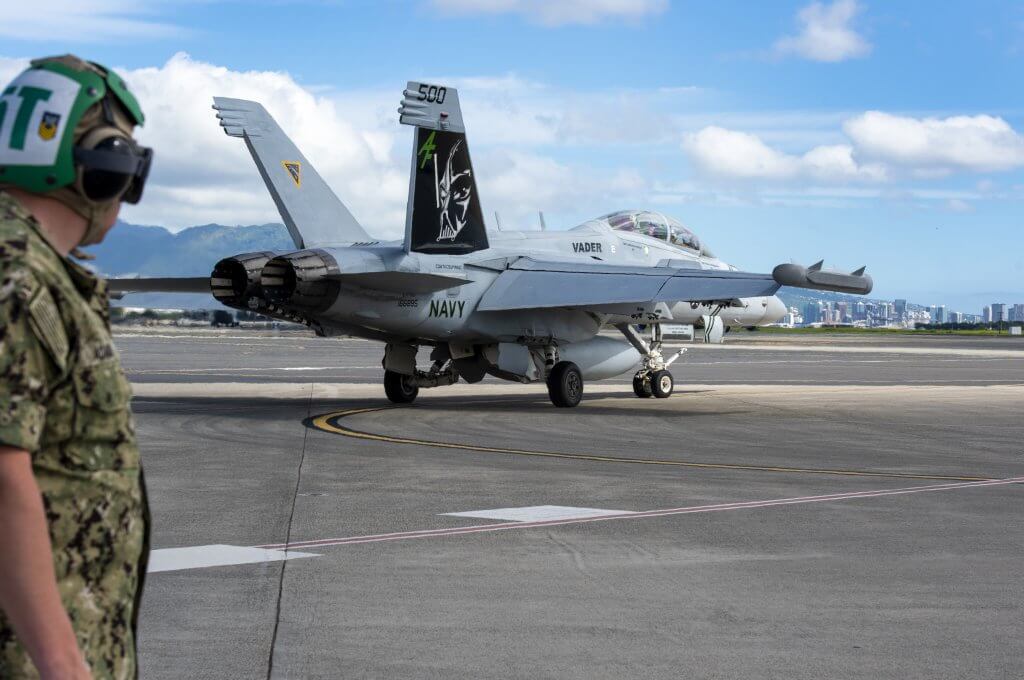JOINT BASE PEARL HARBOR-HICKAM, Hawaii – The Hawaiian skies cleared for Total Force Airmen and Navy Reserve exercise participants as they took part in a first-of-its-kind fighter exercise from Jan. 18-26.
While the Hawaii Air National Guard routinely hosts large-scale combat exercises through its Sentry Aloha program, this training marked the first time EA-18G Growlers combined their electronic attack (EA) capabilities with the locally-based F-22 Raptors within the joint venue.
The scaled-down roster of participants enabled Growler operators, assigned to the ‘Star Warriors’ Electronic Attack Squadron (VAQ) 209, and the ‘Hawaiian Raptors’ to hone in on specialized tactics, tailored to their unique attack capabilities.
The EA-18G Growler is the U.S. military’s premier Airborne Electronic Attack platform and is flown exclusively by the U.S. Navy from aircraft carriers and shore bases and it provides advanced suppression of enemy air defenses.
“The ability to integrate with the F-22 from the Hawaii ANG allowed VAQ-209 the chance to conduct air-to-air missions – including basic fighter maneuvers – with a highly advanced and high thrust-to-weight fighter, which is a rare and unique opportunity for a VAQ squadron,” said Navy Reserve Cmdr. Peter Scheu, VAQ-209 public affairs officer. “This airspace allows them to maximize their time, fuel and training that is not available at their home station.”
RELATED: Tennessee aircrew credits trust for successful bear-attack rescue
Pilots, aircraft maintenance personnel and mission planners rely on exercises to raise their combat proficiencies, resourcefulness and ability to integrate with other advanced aircraft.
“We are doing a lot of in-flight refueling, which we don’t have that opportunity at home, so we are testing our in-air capabilities,” said 1st Class Petty Officer Natasha Williams, a VAQ-209 aircraft mechanic who specializes in structure and hydraulic systems. “Non-detectable aircraft technology used for our aircraft color scheme helps us blend in, and the protective coating helps us to reflect radar.”
While the primary goal of this exercise is to test and improve warfighting skills with partnered units to ensure air superiority, it also provides a collaborative environment to connect and enhance communication.
“A big part of communication is that we use different words to say the same thing,” said Lt. Col. Steven Augugliaro, Sentry Aloha director. “For example, in the USAF, we call two fighters flying in a formation a ‘Two-Ship.’ In the Navy, they would call that same formation a ‘Section.’ Getting familiar with the different terms in a joint environment can help break down barriers to communication when working together.”
Integrating combat platforms for such a joint exercise increases overall mission readiness for both squadrons as they learn capabilities that can be leveraged when both aircraft operate together synergistically; a concept commonly known as a ‘force multiplier’ in the fighter community.

